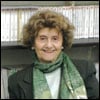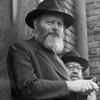Sitting in the Rebbe’s waiting room one night in February 1969, Mossad intelligence representative Nehemiah Levanon recalled, “I was gripped by the sense that I had penetrated a unique realm, unlike anything previously encountered… One visitor arrived from Tunis to report on a Jewish school recently opened, a second reported from Istanbul… a third from Belgrade… One elegantly dressed visitor was a renowned businessman from Cincinnati… From the random conversations we overheard the impression was formed that we were in the operational headquarters of a huge organization straddling the globe.”
This would be Levanon’s first meeting with the Rebbe, but he had already encountered Chabad’s underground operatives when posted to Moscow in the 1950s.1
Levanon spent more than an hour and a half closeted with the Rebbe, debating the intricate nexus of American, Soviet and Israeli foreign affairs. The Rebbe wanted the Mossad to persuade Prime Minister Eshkol to suspend Israeli backed public protests on behalf of Soviet Jewry. “The Rebbe claimed to have certain knowledge that if nothing diplomatically untoward occurred, thousands of Jews would arrive in Israel from the Soviet Union… perhaps that very year.”2
Tragically, Eshkol suffered a sudden heart attack and died within ten days of this meeting. Yoram Dinstein, an Israeli diplomat and future academic who accompanied Levanon, later speculated that “if he had lived… and the Rebbe’s position were again presented to him… something in the government’s approach may have changed.”3
In the event nothing did change, and the Rebbe spoke out sharply at the missed opportunity.4 Though their exchange with the Rebbe was often heated it was not antagonistic. Levanon and Dinstein departed with the friendly understanding that they would continue working together.
Several months later the Rebbe asked Rabbi Shlomo Riskin, a graduate of Yeshiva University and chairman of the Student Struggle for Soviet Jewry, to travel to the Soviet Union and establish underground Yeshivot in four different cities. When Riskin agreed, the Rebbe opened a drawer, took out a telephone, and pressed a button. “Nehemiah,” he said in Hebrew, “Shlomo says yes.” A moment later Nehemiah Levanon was asking Riskin to open four Hebrew ulpans.5
In the early 1970s the number of Jews granted exit visas steadily increased. Nevertheless, protests continued alongside a campaign for the United States Congress to link Soviet economic interests to Jewish immigration (“linkage”). The Rebbe insisted that such activism only antagonized Soviet officials and would ultimately prove counter-productive. In 1973 thirty five thousand Jews were allowed to leave Russia. But in 1974 Congress passed the Jackson-Vanik linkage amendment, and the Soviets retaliated with a severe crackdown on Jewish emigration.6
After coming to office in 1977 President Carter further advanced linkage policies and openly condemned the Soviet human rights record. His public meddling in internal Soviet affairs led to spiraling antagonism and mistrust, culminating in the total breakdown of “backchannel” talks.7 When President Reagan appointed George Shultz Secretary of State in 1982, Soviet Jewish emigration had slowed to a near halt.
In the Summer of 1983 the Rebbe publicly appealed to the President of the United States to act on behalf of the millions of Jews still behind the Iron Curtain. As usual, he warned that “noise and propaganda” led to “opposition and stubbornness,” and advised that human rights “should not be linked with other matters.” The Rebbe also intimated that Yuri Andropov’s recent appointment as Soviet Premier presented a new opportunity.8
Precisely at this time, United States ambassador Max Kampelman9 was hammering out a breakthrough human rights deal with KGB General Sergei Kondrashev. Kondrashev stressed that the deal would go ahead only if Kampelman, Shultz and Reagan preserved its secrecy between themselves.10 The deal was brought to fruition within a month of the Rebbe’s talk11 and was later hailed by Shultz as a turning point, “Ronald Reagan did not crow… and the Soviets got the message that President Reagan cared about the fate of Soviet Jewry in a nonpolitical way.”12
The largest “Solidarity Sunday” rally for Soviet Jewry ever was held ahead of the 1987 Washington Summit between Reagan and Gorbachev. Records show that Gorbachev was initially happy to discuss human rights, but when Reagan mentioned the rally he demanded the topic be dropped, “he would not sit as the accused before a prosecutor.”13 The following year the Rebbe persuaded Senator Daniel Patrick Moynihan to use his influence to have Solidarity Sunday cancelled.14 This caused great controversy in the American Jewish community, but the results were immediate. The number of Jews allowed to leave shot from 7,776 to 19,343.15 In 1990 the number of Jews released to live in freedom surpassed two hundred thousand.16
But the Rebbe was also concerned about life after communism. He recognized the Jewish movement in the Soviet Union as a spiritual reawakening, which political emancipation alone could not satisfy. Chabad representatives in Israel and America not only developed new housing projects but also established religious, educational and cultural institutions.17 He also dispatched emissaries to accommodate the spiritual and material needs of those Jews who remained in the former Soviet Union, ensuring that Russian Jewry would endure not only in body but also in soul. Today Chabad serves more than two hundred communities across Russia.18








Start a Discussion